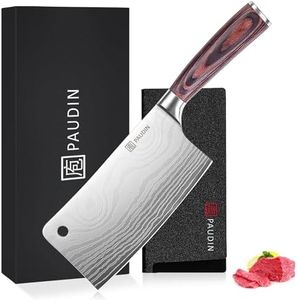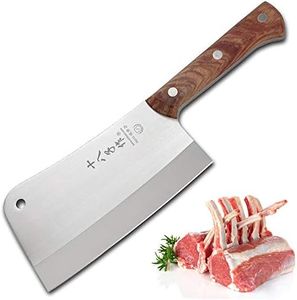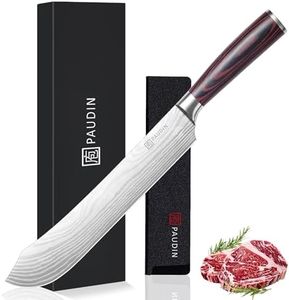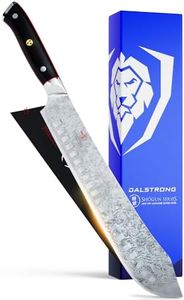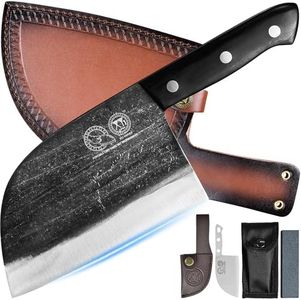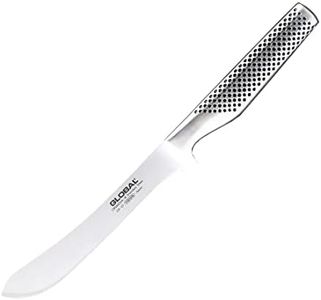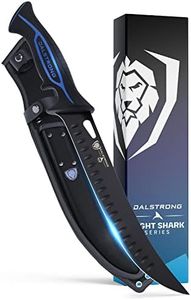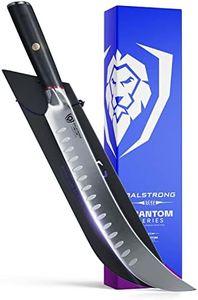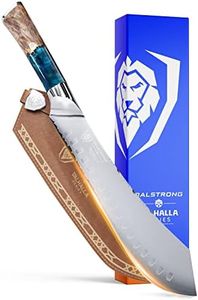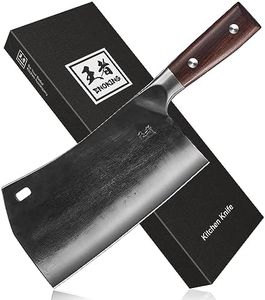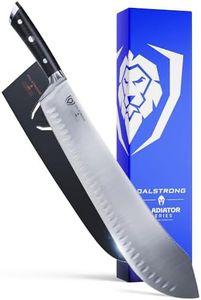We Use CookiesWe use cookies to enhance the security, performance,
functionality and for analytical and promotional activities. By continuing to browse this site you
are agreeing to our privacy policy
10 Best Butcher Knives
From leading brands and best sellers available on the web.By clicking on a link to a third party's website, log data is shared with that third party.
Buying Guide for the Best Butcher Knives
Choosing the right butcher knife is essential for anyone who does a lot of meat preparation at home or in a professional setting. A good butcher knife can make cutting, sectioning, and trimming meat quicker, safer, and more efficient. When picking one, focus on how the knife feels in your hand, its balance, and whether it matches the tasks you do most often.Blade MaterialThe material of the blade is crucial because it affects sharpness, durability, and maintenance. Most butcher knives are made from stainless steel, which resists rust and corrosion, or high-carbon steel, which tends to be a bit sharper and easier to hone, though it may require more care to prevent rust. If you want easy care and frequent usage, choose stainless steel. If you prefer a sharper edge and don't mind a little upkeep, high-carbon steel could be for you.
Blade LengthThe length of the blade can determine how well the knife handles different sizes and types of meat. Shorter blades (6-8 inches) are better for precision work and smaller cuts, while longer blades (10-14 inches) are ideal for slicing through larger pieces or whole cuts of meat. Choose a length based on the size and type of meat you most often prepare. Larger cuts require a longer blade for efficiency, while smaller or more intricate tasks benefit from a shorter blade.
Blade ShapeThe shape of the blade influences what tasks the knife is best at. Straight blades are better for clean slicing and portioning, while blades with a curved edge help with rocking motions and can make trimming fat easier. Consider the tasks you do most: for straightforward slicing, a straight blade is useful; for trimming and separating, a gently curved edge provides more control.
Handle Material and ErgonomicsThe handle impacts comfort, grip, and control, especially when working for extended periods. Handles can be made from wood, plastic, or composite materials. Wood handles offer a traditional feel but need more care; plastic and composites are easier to maintain and resist moisture. Look for a handle shape that fits your hand comfortably and feels stable—if you have smaller hands or are concerned about slipping, a contoured or textured grip is key.
Weight and BalanceThe overall weight and balance of a butcher knife affect how tiring it is to use and how precise your cuts can be. Heavier knives can aid in cutting through bone and dense tissue, but may become tiring if used for long periods. A well-balanced knife, where the weight is evenly distributed between blade and handle, helps minimize strain and allows for better control. Consider which feels more natural in your hand, and if you do a lot of heavy-duty work, a bit of weight could be beneficial.
Ease of Sharpening and MaintenanceHow easily a knife can be sharpened and maintained is especially important for longevity and consistent performance. Some materials and blade designs are easier to sharpen at home, while others might require professional attention. Think about how much time and effort you’re willing to spend on maintenance—if you prefer low fuss, look for knives that hold their edge longer and clean up easily.
